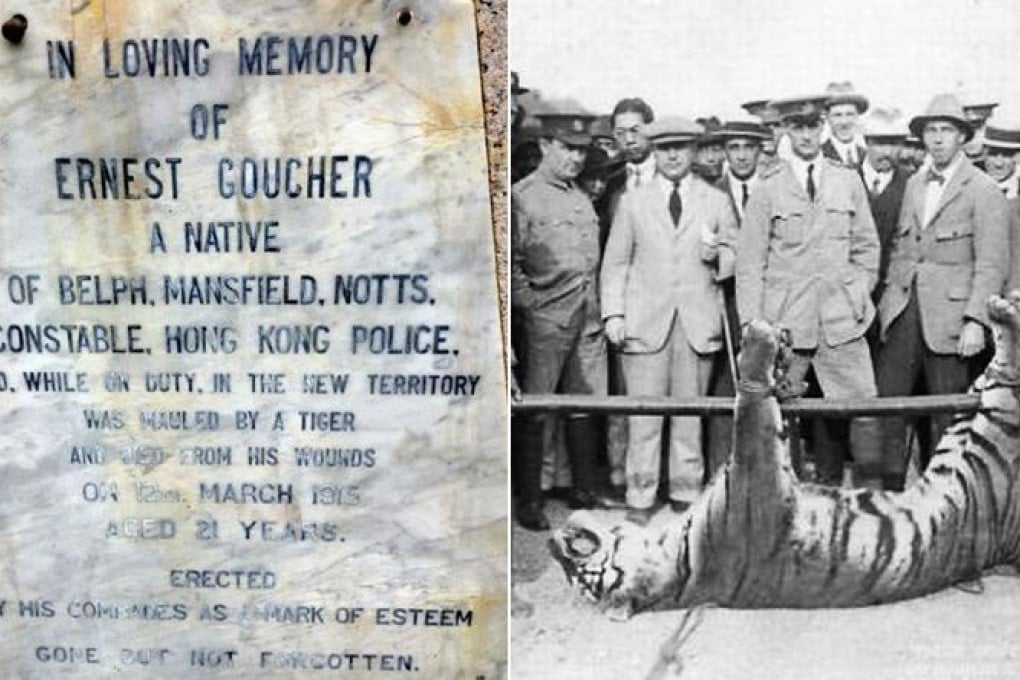How a wild tiger killed two Hong Kong policemen ... 100 years ago
Wild tigers did not exist within the borders of Hong Kong in the early 1900s, or so zoologists had believed. But a tombstone in Hong Kong Cemetery in Happy Valley tells a different story.

Wild tigers did not exist within the borders of Hong Kong in the early 1900s, or so zoologists had believed.
But a tombstone in Hong Kong Cemetery in Happy Valley tells a different story.
On March 9, 1915, Ernest Goucher was attacked by one of the big cats while on duty in the New Territories.
He had been investigating the death of a villager in Sheung Shui who had reportedly been killed by a tiger.
Residents had run into Fanling police station earlier that month to report sightings of a tiger on the loose, but had been dismissed - officers putting it down to "the Chinese propensity for exageration", according to South China Morning Post reports at the time.
Only after the reported death of the villager did police take action.